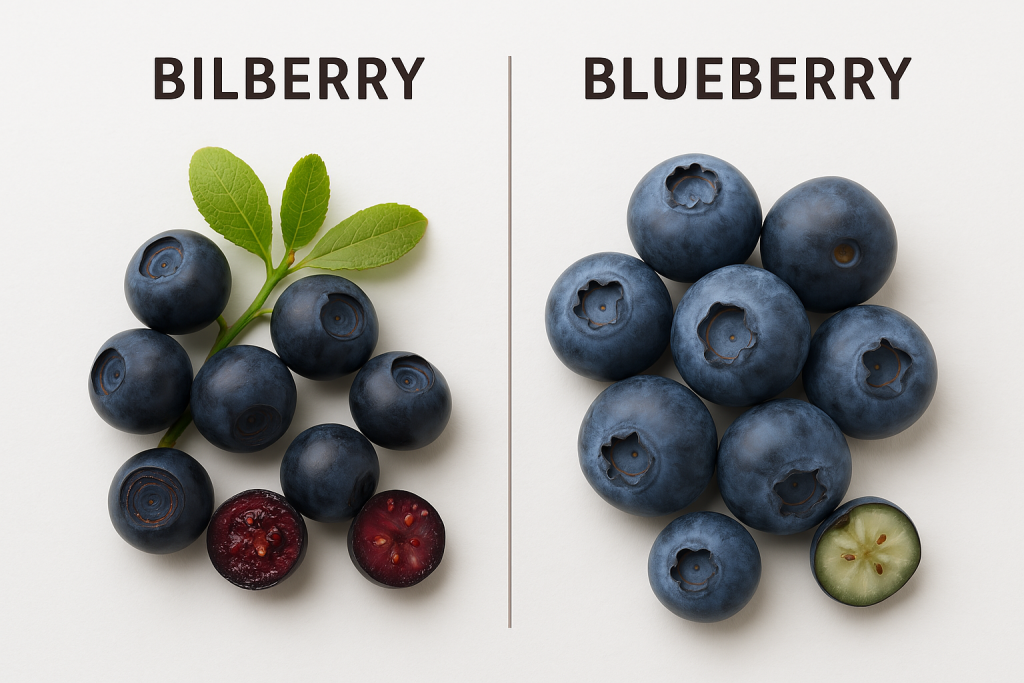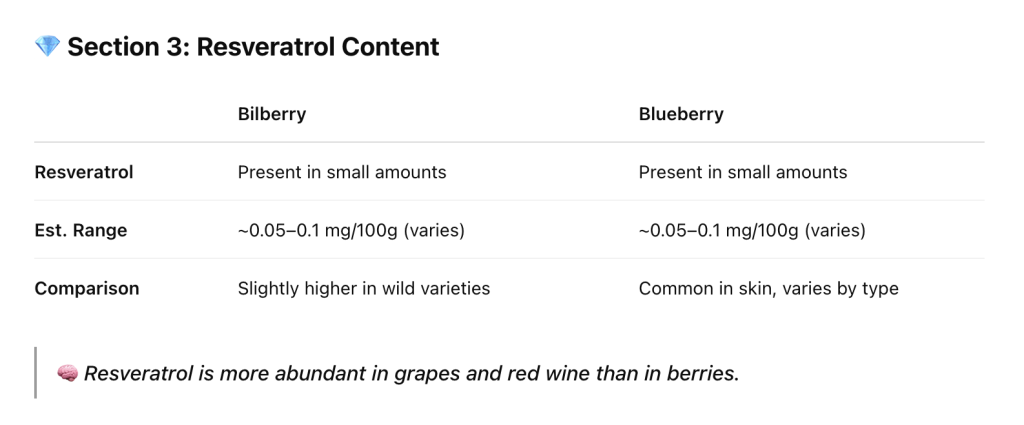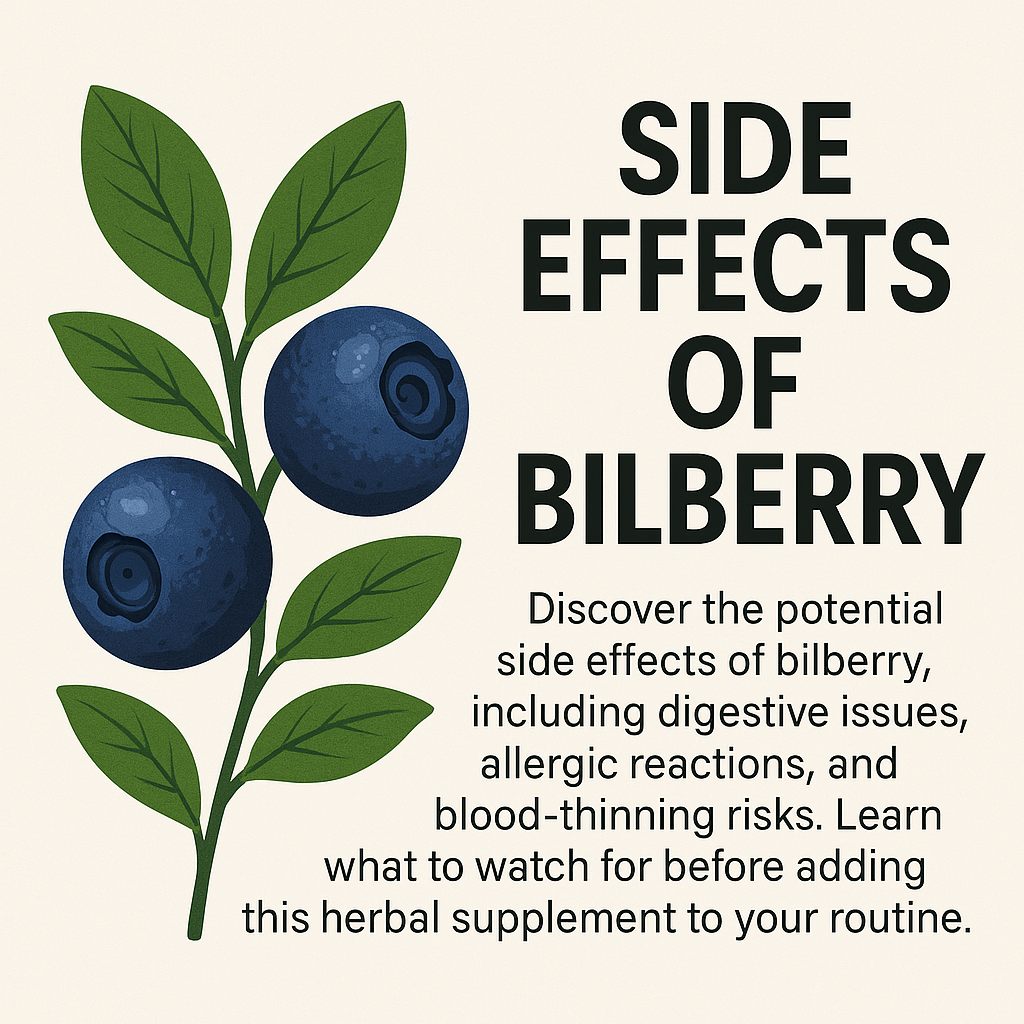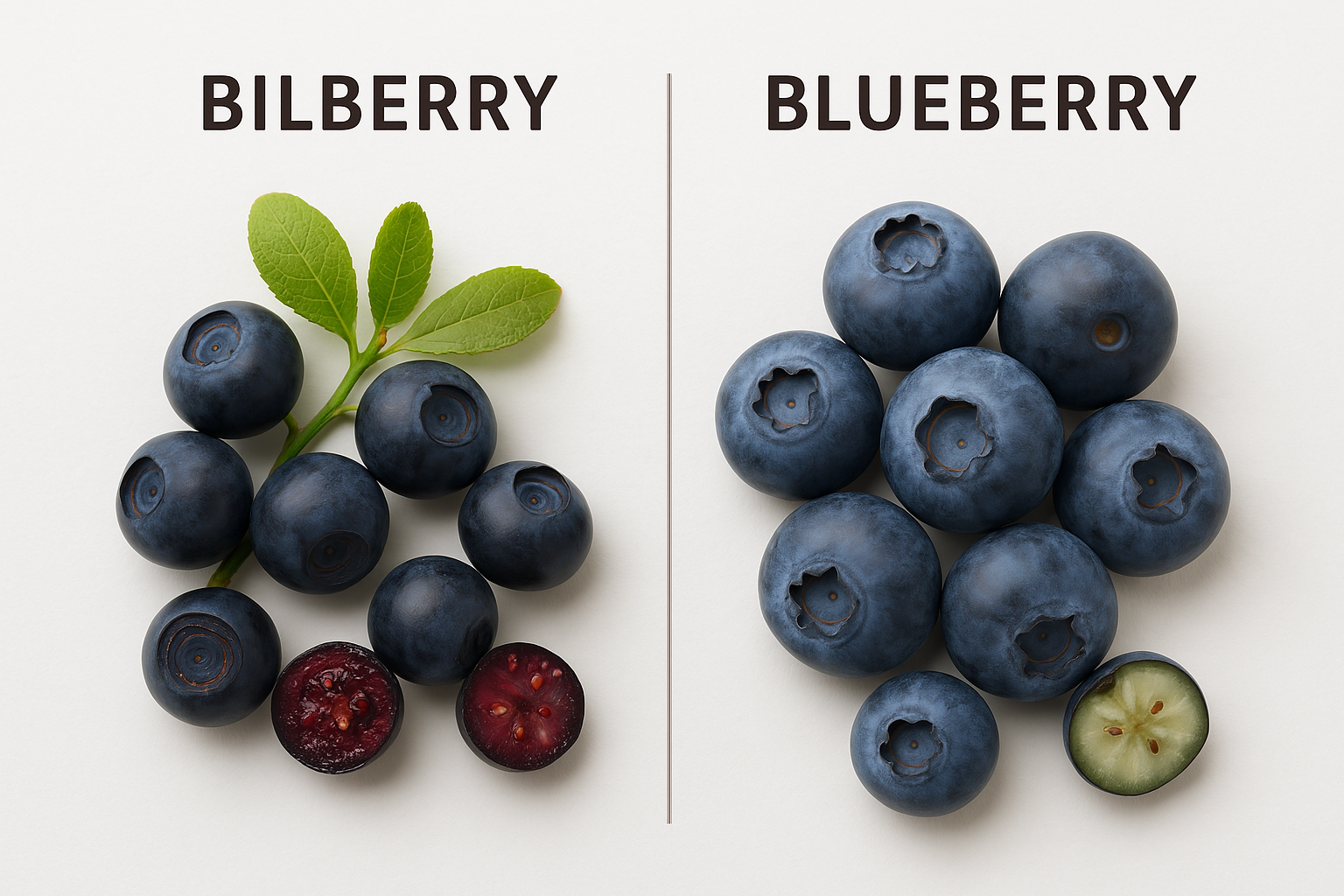Bilberries and blueberries are often mistaken for each other—and for good reason. They’re closely related, share a similar size and color, and even grow in similar climates. But despite their likeness, these berries differ significantly in their nutrient profiles, medicinal uses, and notably, their resveratrol content.

Botanical Background: Cousins, Not Clones
Both bilberries (Vaccinium myrtillus) and blueberries (Vaccinium corymbosum, among others) belong to the same plant family—Ericaceae—but they hail from different regions. Bilberries are native to Europe and grow wild in the forests and moorlands of Northern and Central Europe. Blueberries, on the other hand, are native to North America and are now widely cultivated across the globe.
Appearance and Taste
Bilberries tend to be smaller, darker, and softer than blueberries. Their flesh is deep red or purple, staining fingers and lips upon handling, while blueberries have a pale greenish interior. Taste-wise, bilberries are more tart and intensely flavored, whereas cultivated blueberries lean toward a sweeter profile.
Nutritional Differences
Both berries are rich in antioxidants, particularly anthocyanins, which give them their characteristic color and have been linked to numerous health benefits. However, bilberries contain significantly more anthocyanins per gram than blueberries, due to their pigmentation throughout the fruit, not just the skin.
Where bilberries really stand out nutritionally is in their traditional use for supporting eye health, circulation, and inflammation. Blueberries are praised for brain health and general antioxidant support, especially in the context of American diets.

Resveratrol Content: A Key Phytochemical
One of the lesser-known, but highly regarded compounds found in these berries is resveratrol—a natural polyphenol that has been studied for its potential anti-aging, anti-inflammatory, and cardioprotective properties.
Blueberries and Resveratrol
Blueberries contain small but detectable amounts of resveratrol, especially in their skins. However, they are not considered a major dietary source. The resveratrol levels in cultivated blueberries typically range from 0.05 to 0.10 mg per 100 grams, depending on variety, region, and growing conditions.
For more on blueberries and resveratrol start here.
Bilberries and Resveratrol
Bilberries also contain resveratrol, although less data is available on their precise concentrations. Some studies suggest that wild bilberries may contain similar or slightly higher levels of resveratrol compared to cultivated blueberries, likely due to environmental stressors in the wild that stimulate phytochemical production.
Still, compared to top sources like red grapes, Japanese knotweed, and peanuts, both bilberries and blueberries contain relatively modest amounts of resveratrol. Their health benefits are more strongly tied to their anthocyanin and flavonoid content.

Which One Should You Choose?
If you’re looking for a stronger antioxidant punch, particularly for vision or vascular health, bilberries might edge out blueberries thanks to their higher anthocyanin levels. If you prefer a sweeter taste and better availability, blueberries are the more convenient—and still highly nutritious—option.
For those specifically targeting resveratrol, it’s important to note that while both berries offer some, they are not the most efficient sources. Resveratrol supplements or other rich food sources like red wine (from grape skins) and certain nuts may be better options for boosting your intake of this compound.
Conclusion
Bilberries and blueberries may look like twins at first glance, but they diverge in taste, origin, and phytochemical content. While both provide small amounts of resveratrol, their primary health benefits come from other powerful antioxidants. Incorporating either berry into your diet can be a delicious and health-supportive choice, but knowing the subtle differences can help you tailor your nutrition to your goals.
A Little Bit Deeper Research
There is so much to learn in the world of resveratrol, antioxidants, superfoods and wine. This is the place to start, no matter what, if you indeed are looking to maximize your health and live longer.
 |
Side Effects of Bilberry In the game of Majority Wins . . . the days of Andy Griffith would quickly come to an end. |
 |
Blueberry vs Bilberry Despite their likeness, these berries differ significantly in their nutrient profiles, medicinal uses, and notably, their resveratrol content. |